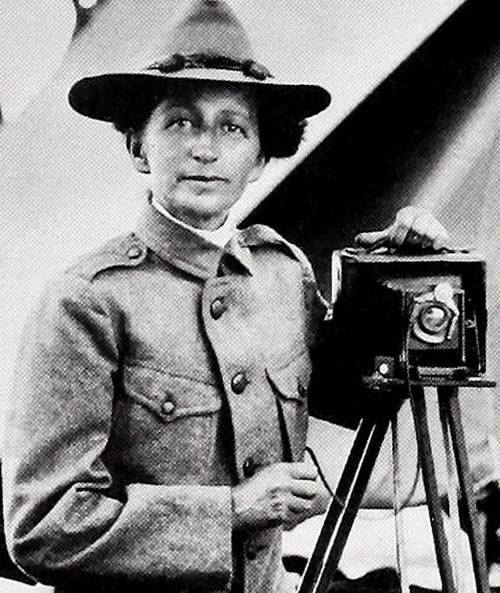
FAQ About The Impact of Documentary Photography on Social Justice

What is documentary photography?
Documentary photography is a style of photography that captures real-life events or environments to tell a story or convey a message. The primary aim is to provide a truthful and accurate depiction of people, places, and events. It often focuses on social and political issues, aiming to inform and sometimes provoke change.

How does documentary photography contribute to social justice?
Documentary photography contributes to social justice by shedding light on issues that might otherwise remain unseen or misunderstood. By capturing the lived experiences of marginalized groups, it raises awareness, fosters empathy, and encourages public discourse which can lead to social change. The visual impact of photographs can be powerful in influencing both public opinion and policy.

Can documentary photography influence public policy?
Yes, documentary photography can influence public policy by raising awareness and creating a sense of urgency about social issues. Photographs can bring attention to injustices and amplify calls for policy changes. When these images reach lawmakers, they can catalyze discussions and actions towards rectifying the highlighted issues.

What are some famous examples of documentary photography impacting social justice?
One famous example is the work of Lewis Hine, whose photographs of child labor in the early 20th century helped to bring about labor law reforms. Another is the photography from the Civil Rights Movement in the United States, which played a crucial role in raising awareness and support for legislative changes. More recently, images of the refugee crisis have drawn global attention and support for humanitarian efforts.

Who are notable documentary photographers known for their work in social justice?
Notable documentary photographers include Dorothea Lange, known for her work during the Great Depression, Sebastiao Salgado, whose photographs highlight human migration and poverty, and W. Eugene Smith, known for his photo essays on social issues. Their works have been instrumental in bringing social injustices to light.

What role does empathy play in documentary photography?
Empathy is crucial in documentary photography as it allows the viewer to connect with the subjects on a human level. By evoking emotional responses, documentary photography can inspire viewers to change their perceptions and take action towards social justice. The emotional connection facilitated by these images often makes the issues more relatable and urgent.

How do documentary photographers maintain objectivity?
Documentary photographers strive for objectivity by focusing on facts, avoiding manipulation of images, and respecting the truth of their subjects. However, complete objectivity can be challenging as the photographer's perspective invariably influences the framing and context of an image. Ethical responsibility and adherence to journalism standards help maintain as much objectivity as possible.

Is there a difference between documentary photography and photojournalism?
While both documentary photography and photojournalism aim to capture real-life events and tell stories through images, they differ slightly in approach and context. Photojournalism is more news-oriented and often has a faster turnaround for publication, focusing on current events. Documentary photography can be more in-depth, developing narratives over a longer period.

How has digital technology affected documentary photography?
Digital technology has profoundly impacted documentary photography by making it easier to capture, edit, and distribute images. The internet and social media allow photographers to reach a global audience quickly and at a low cost. However, it also raises challenges regarding authenticity, as digital manipulation of photos becomes easier.

What ethical considerations should documentary photographers keep in mind?
Documentary photographers must consider the privacy and dignity of their subjects, ensuring informed consent wherever possible. They should avoid exploiting or misrepresenting individuals and situations, maintain objectivity, and adhere to truthfulness in their work. Photographers should also be sensitive to the potential impact their images may have on communities represented.

Can documentary photography be used as a tool for activism?
Yes, documentary photography is often used as a tool for activism by highlighting social injustices and rallying public support for change. It serves as a visual medium to convey powerful messages, mobilizing grassroots movements and influencing decision-makers by directly appealing to human emotions and conscience.

What challenges do documentary photographers face when focusing on social justice issues?
Documentary photographers often face challenges such as gaining access to marginalized communities, ensuring the safety of themselves and their subjects, and dealing with the potential legal ramifications of their work. They also have the ethical dilemma of portraying their subjects with dignity while effectively conveying the gravity of the issues.

How do audiences typically respond to documentary photography on social justice issues?
Audiences often respond with a mixture of shock, empathy, and motivation to act. The powerful imagery can galvanize public opinion, lead to increased awareness, and sometimes spark direct action or support for a cause. However, responses can vary greatly depending on personal perspectives and societal contexts.

Why is storytelling important in documentary photography for social justice?
Storytelling in documentary photography is crucial as it provides context and meaning to the images, making them more impactful. By weaving narrative elements with visual documentation, photographers can better engage an audience's emotions and intellect, facilitating a deeper understanding of social justice issues and inspiring action.

How do social media platforms impact the dissemination of documentary photography?
Social media platforms significantly enhance the dissemination of documentary photography by allowing images to be shared widely and rapidly. They provide a platform for reaching a global audience far beyond traditional media channels, increasing visibility and engagement with social justice issues. However, they also present challenges related to context and potential misuse of images.

What training do documentary photographers need to work on social justice issues?
Documentary photographers often benefit from a background in photography, journalism, or social sciences to understand both the technical and social implications of their work. Training in ethical practices, narrative storytelling, and cultural sensitivity is also essential to effectively document and engage with complex social justice issues.

How do funding and support impact documentary photography projects on social justice?
Funding and support are crucial for documentary photography projects as they provide the necessary resources for photographers to undertake extensive and often costly work. Grants, fellowships, and sponsorships can enable photographers to travel, access communities, and dedicate time to explore and document social issues in depth.

What are the limitations of documentary photography in addressing social justice issues?
While documentary photography is a powerful tool for raising awareness, it has limitations. Images alone may not convey the full complexity of social justice issues, sometimes leading to oversimplification. There's also the risk of 'poverty tourism' where imagery is consumed passively without inspiring action or change, and ethical concerns about representation and consent can arise.

Can documentary photography change stereotypes or biases about social issues?
Yes, documentary photography has the potential to change stereotypes and biases by presenting diverse and authentic narratives. By showcasing underrepresented perspectives, it can challenge preconceived notions and encourage a more nuanced understanding of social issues. However, the effectiveness largely depends on the audience's willingness to engage with the content critically and empathetically.
